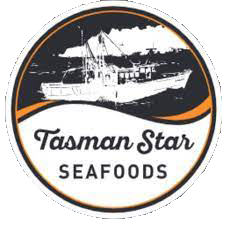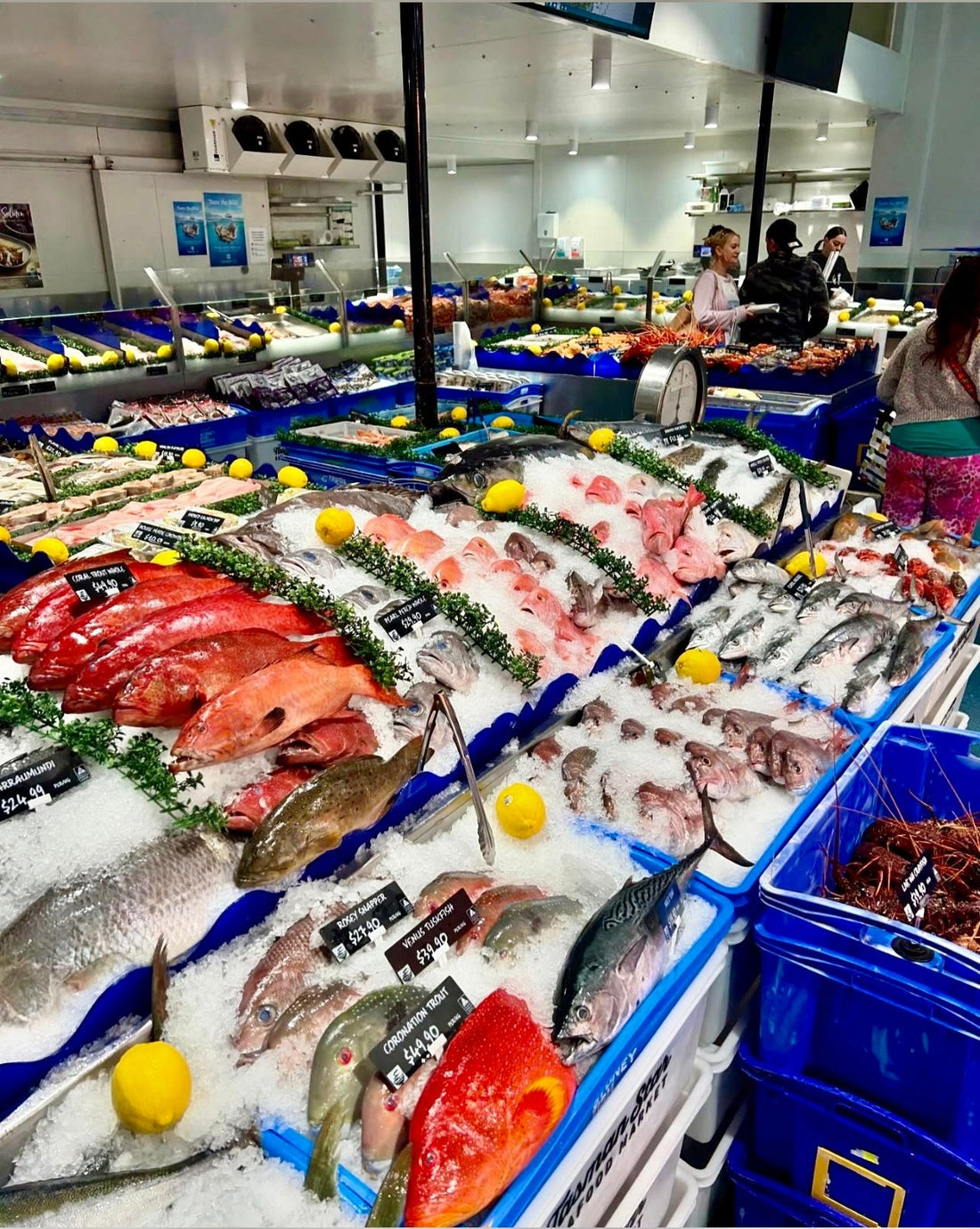Tasmania sits at the meeting point of cool Southern Ocean currents and productive coastal estuaries. That mix shapes a clear seasonal rhythm for local seafood. The guide below maps what’s typically at its best each month, with notes on key openings and quality peaks. Always check current Tasmanian rules if you’re fishing yourself, as some species have short, regional closures designed to protect spawning stocks.
How to use this calendar
Think of it as a buyer’s almanac. It pairs common market availability with prime eating windows. Farmed staples (like Atlantic salmon) are steady year-round, while wild species swing with the weather and biology. Southern bluefin tuna, for example, drives autumn–winter excitement off the east and south coasts, whereas southern calamari concentrates over seagrass in spring and early summer to spawn.
Monthly snapshot (Tasmanian waters)
| Month | What’s plentiful | Notes |
|---|---|---|
| Jan | Rock lobster, calamari, flathead | Warm-water inshore species are common; squid fishing often good post-spring closures. |
| Feb | Rock lobster, calamari, early tuna | Late-summer sees first bluefin sightings some years. |
| Mar | Bluefin tuna, flathead, oysters start to improve | Game fishing builds; oyster quality begins lifting as waters cool. |
| Apr | Bluefin tuna, oysters, mussels | Peak big-fish months begin; shellfish eat especially well. |
| May | Bluefin tuna, oysters, mussels | Cool conditions favour both finfish and bivalves. |
| Jun | Bluefin tuna, scallops open (areas), oysters | Selected scallop zones open mid-June in 2025; check area maps. |
| Jul | Tuna tail of season, oysters, mussels | Deep winter delivers briny, full oysters. |
| Aug | Giant crab (males), oysters | Male giant crab season runs Aug–Jun; female season differs. |
| Sep | Calamari (spawning aggregations protected by short regional closures), oysters | Expect targeted squid rules in spring; buy from reputable sellers. |
| Oct | Calamari, oysters | Spring shellfish still strong; watch any local squid closures. |
| Nov | Rock lobster reopens widely, scallops (to 31 Dec), calamari | Festive-season cray makes a comeback; scallops finish by year-end. |
| Dec | Rock lobster, scallops (to 31 Dec), oysters | Holiday tables favour lobster; last call for legal scallop areas. |
Tasmanian Atlantic salmon is farmed and available year-round; the state supplies more than 90% of Australia’s production, so you’ll rarely see gaps at the counter.
Summer (December–February)
Expect a lively mix: southern calamari, flathead, garfish and—once recreational and commercial reopenings kick in—southern rock lobster. Summer squid quality stays high after spring’s brief, regional protection periods, and warmer evenings make quick pan-fries and grills a pleasure. If you’re chasing a simple rule for the holidays: buy lobster bright from Best fish market Gold Coast, heavy for size, and with a clean ocean scent.
Autumn (March–May)
This is game-fish time. Southern bluefin tuna push along the east and south coasts through autumn and into winter, with many crews calling April–May the sweet spot. Shore-side, oyster quality lifts as water temperatures drop, and blue mussels, and Best prawns Gold Coast are widely promoted through autumn across major markets. Pair briny shellfish with simple mignonette or a squeeze of lemon and keep the focus on provenance.
Winter (June–August)
Cold air, big flavours. Bluefin and Buy fresh prawns Gold Coast catches often peak through winter; scallop grounds open from mid-June in designated areas and run until 31 December (check the annual Gazette notice and NRE Tasmania maps for precise zones). From 1 August, the male giant crab season begins—ask for cleanly cooked sections with sweet, translucent flesh. Oysters are at their briniest in mid-winter. If you prefer farmed fish, Tasmanian salmon remains steady through this period.
Spring (September–November)
Spring brings a notable shift. Southern calamari aggregate over seagrass to spawn, which is why you’ll see short, regional closures to protect those breeding schools; once open, markets fill with tender tubes and wings. Many areas reopen for rock lobster in November, aligning neatly with the lead-up to Christmas. Scallops continue through December where legal, and oysters stay consistent before summer spawning. As always, buy from retailers who can tell you where and how the seafood was taken. When you’re new in town, it’s tempting to punch Best fish market near me into your phone; in Tasmania, a short question—“Where was this caught?”—goes even further.
Species notes to keep you on track
- Southern bluefin tuna: Targeted off St Helens, Eaglehawk Neck and the south coast from autumn into winter; seasons vary year to year with currents and temperature.
- Southern calamari: Spawns in spring–summer; look for firm, translucent flesh and quick-cook it to keep it tender.
- Rock lobster (southern): Openings and closures differ by region and fishery; summer demand is high, so pre-order for December events.
- Scallops: Commercial and recreational rules change by area; for 2025, key state waters opened mid-June, closing 31 December.
- Oysters: Available all year, with peak eating typically April–September as waters cool.
- Abalone: Wild harvest operates year-round under strict quotas and zone caps; buy from licensed sellers.
Buying smart
Ask for the capture method and harvest area. Line-caught, trap-caught and hand-collected products are easy to recommend, and Best prawns Gold Coast Tasmanian vendors are used to those questions. Use whole-fish cues—clear eyes, bright gills, a clean marine smell—and aim to cook shellfish within a day of purchase.

